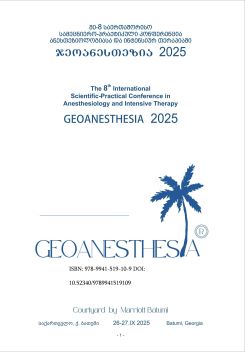Regional Anesthesia in the Primary Stages of Casualty Evacuation
DOI:
https://doi.org/10.52340/9789941519109.22ანოტაცია
Background: Contemporary armed conflicts are predominantly associated with shrapnel-induced extremity injuries caused by artillery and drone attacks. According to The Economist (November 2024), approximately 400,000 individuals have been wounded in the course of the war in Ukraine.
Objective: To optimize analgesia during early evacuation of wounded personnel by implementing regional anesthesia techniques that provide effective pain control without compromising vital physiological functions.
Methods: Pre-evacuation ultrasound-guided marking of major peripheral nerve plexuses is performed by anesthesiologists. Targeted structures include the brachial plexus (infraclavicular approach) for upper extremities and the lumbar and sacral plexuses, including femoral and sciatic nerves (anterior approach), for lower extremities. Depth of anatomical structures is documented. This approach enables specially trained medical staff to safely administer regional anesthesia in field conditions.
Results: Preliminary experience demonstrates that pre-marking with a surgical skin marker facilitates timely and effective regional blocks during evacuation. This method enhances pain management while preserving hemodynamic and respiratory stability.
Conclusion: Pre-evacuation regional anesthesia planning, supported by ultrasound-guided anatomical marking, represents a practical and effective strategy for improving pain control in mass-casualty settings without the risks associated with systemic analgesia.





